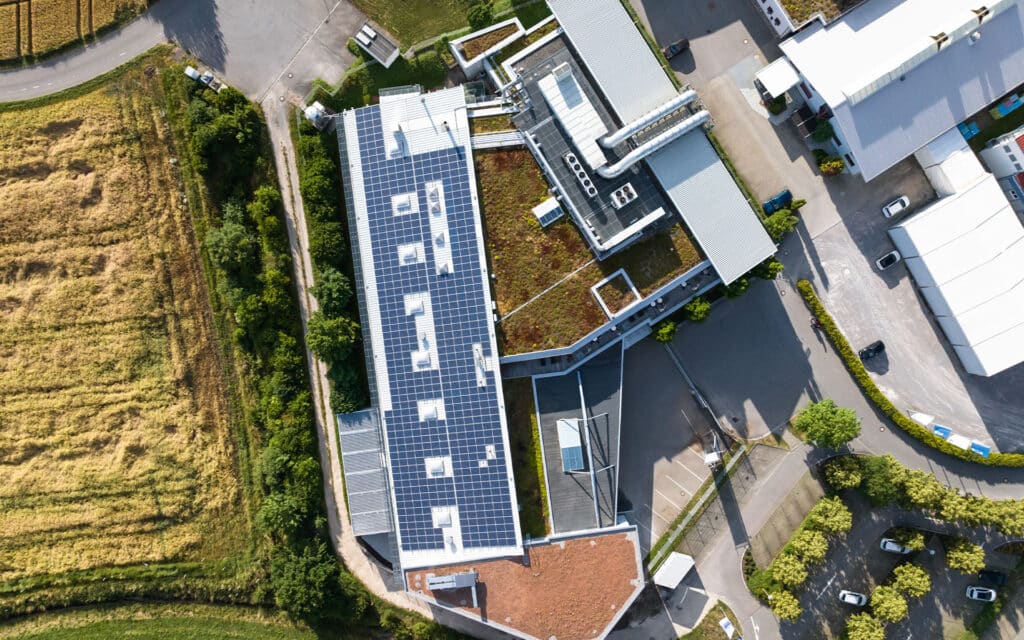Photovoltaic systems convert sunlight directly into electrical energy without generating harmful emissions. By using solar energy, companies can reduce their carbon footprint and make a contribution to environmental protection. Photovoltaic systems enable companies to generate some or even all of the energy they need on site. This reduces dependence on expensive fossil fuels and grid electricity, which can lead to significant cost savings in the long term.

AP&S installed the photovoltaic system in 2023. Construction of the system took over 6 months. The company's solar panels now have a total output of 216 kWp to generate green electricity for its own use.
In 2023, AP&S produced almost twice as much energy as was required at Plant 2 in Donaueschingen (Aasen).
AP&S requires a lot of energy to produce equipment for the semiconductor industry. That is why the company is committed to reducing its own energy consumption. The company established a comprehensive energy management system years ago and has been environmentally certified to ISO 14001:2015 since 2023. The aim is to continuously develop and operate sustainably with energy sources.
The initial investment costs of such a system are quite high, but generally offer a high return over the lifetime of the system. The lower energy costs and possible government incentives such as tax breaks or feed-in tariffs help to shorten the payback period and increase the return on investment (ROI).
"With an estimated electricity generation of 61.1 TWh in 2023, PV covered 12 % of gross electricity consumption [AGEE] in Germany..." *
"Investing in a photovoltaic system not only makes ecological sense, but is also economically attractive. We expect long-term cost savings and improved energy efficiency for our company."
Horst Hall
